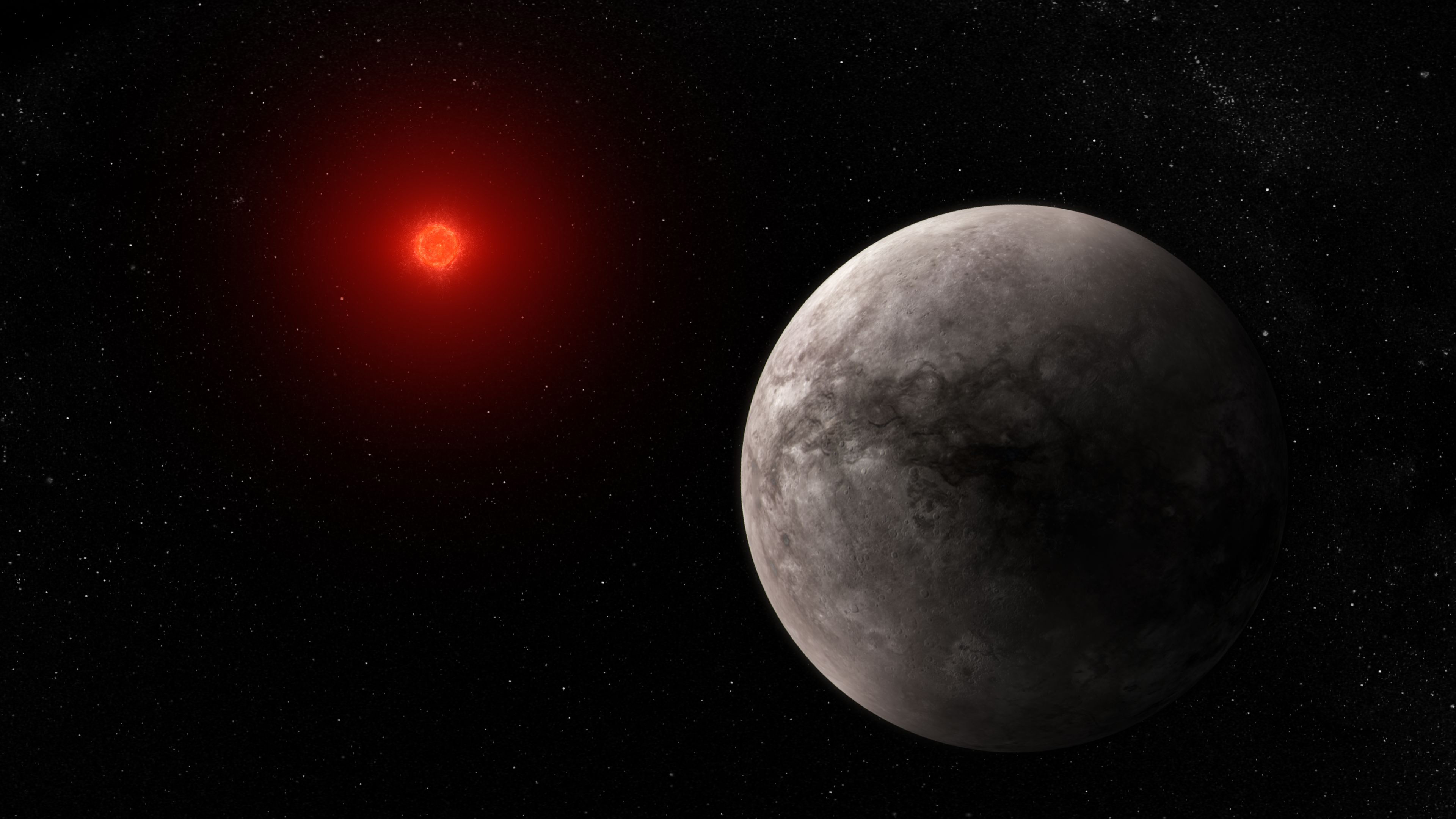James Webb telescope detects light from a small, Earth-like planet — and finds it's missing its atmosphere
NASA's James Webb Space Telescope measured the temperature of the Earth-like planet TRAPPIST-1b and found that it is too hot for humans and likely has no atmosphere.

Five years ago, NASA's infrared Spitzer Space Telescope helped discover a family of seven rocky exoplanets orbiting the same star, known as TRAPPIST-1. Now, NASA's new infrared powerhouse — the James Webb Space Telescope (JWST) — measured the temperature of one of those worlds, TRAPPIST-1b, in new research published in the journal Nature.
The bad news: The Earth-like planet is almost certainly uninhabitable.
Astronomers used JWST's mid-infrared camera, called MIRI, to look for the planet's thermal emission — think heat-sensing "Terminator" vision. They found that TRAPPIST-1b is scorching — about 450 degrees Fahrenheit (232 degrees Celsius), about the temperature of an oven — and that it likely lacks an atmosphere.
The discovery is another record-breaking first for the JWST, which has been steadily producing newsworthy results since its launch.
Related: 35 jaw-dropping James Webb Space Telescope images
"This is the first detection of any form of light emitted by an exoplanet as small and as cool as the rocky planets in our own solar system," NASA officials said in a statement.
"No previous telescopes have had the sensitivity to measure such dim mid-infrared light," Thomas Greene, a NASA astrophysicist and lead author of the new work, said in the statement.
Get the world’s most fascinating discoveries delivered straight to your inbox.
The initial discovery of the seven TRAPPIST-1 exoplanets spurred great excitement in the astronomical community, since all of the distant worlds are about the size of Earth and are located in their star's habitable zone, the region that's just the right distance from a star for liquid water to exist on a planet's surface. This system is "a great laboratory" and "the best targets we have for looking at the atmospheres of rocky planets," study co-author Elsa Ducrot, an astronomer with the French Alternative Energies and Atomic Energy Commission (CEA), said in the statement.
Don't get too excited about a new world for humans yet, though — the TRAPPIST-1 planets are out of our current reach, at a whopping 235 trillion miles (378 trillion kilometers) away. They're also orbiting a star much smaller and redder than our sun, known as an M dwarf star.
"There are ten times as many of these stars in the Milky Way as there are stars like the sun, and they are twice as likely to have rocky planets as stars like the sun," Greene said.
These abundant M dwarfs are obvious targets for astronomers seeking habitable planets, and it's conveniently easier to observe rocky planets around these smaller stars. There's one catch, though: M dwarfs are much more active than our sun, often flaring and spewing high-energy rays that could be damaging to budding extraterrestrial life or to a planet's atmosphere.
Previous observations of TRAPPIST-1b weren't sensitive enough to determine if it had an atmosphere after all, or if it was a barren rock. The planet is tidally locked to its star, meaning one side always faces its star and the other is stuck in perpetual night. Simulations suggest that if this world had an atmosphere, the planet's temperature would be lower, as the air would redistribute the heat around both sides. The JWST recorded a significantly hotter temperature, though — indicating no atmosphere and knocking one more planet off humanity's list of possibly habitable worlds.
The real excitement here, however, isn't really the specifics of TRAPPIST-1b. Instead, the crucial takeaway is that the JWST is capable of these kinds of measurements and will continue to make more of them, exploring the atmospheres and temperatures of many other worlds.
"There was one target that I dreamed of having, and it was this one,” study co-author Pierre-Olivier Lagage, also with CEA, said in the statement. Lagage is one of the developers of MIRI, the instrument that made these observations. "This is the first time we can detect the emission from a rocky, temperate planet. It's a really important step in the story of discovering exoplanets."

Briley Lewis (she/her) is a freelance science writer and Ph.D. Candidate/NSF Fellow at the University of California, Los Angeles studying Astronomy & Astrophysics. Follow her on Twitter @briles_34 or visit her website www.briley-lewis.com.


